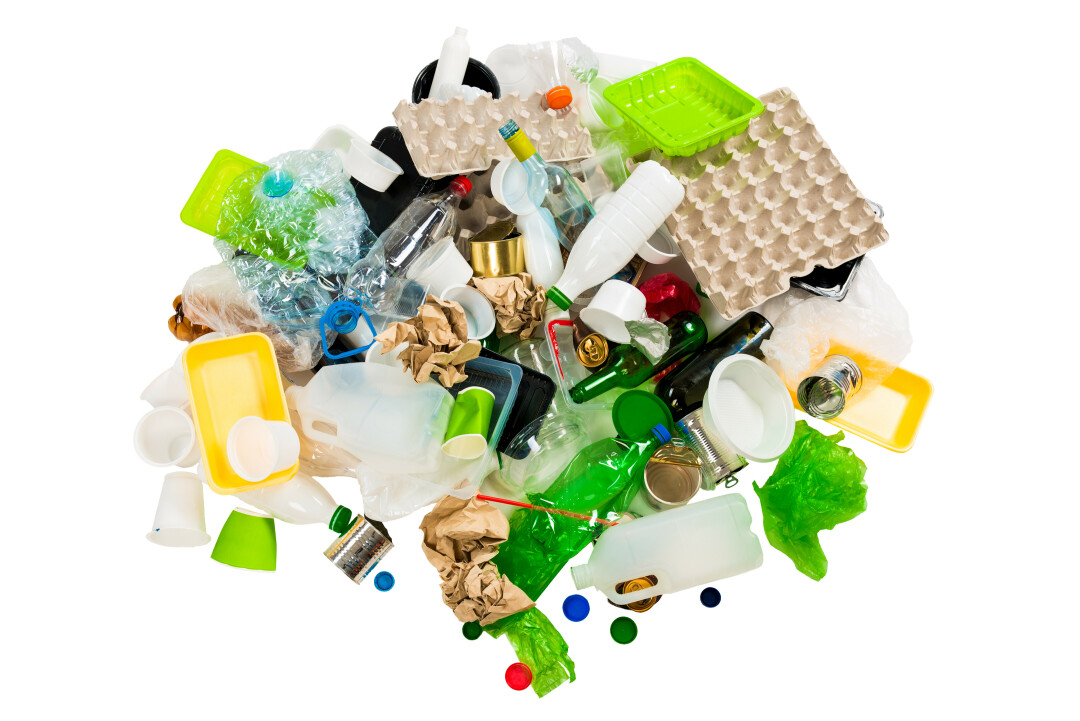News & Articles
Browse all content by date.

We’ve all been there. It’s getting dark outside, the dinner mess is nearly tidied, it’s almost bedtime, and there we are – standing between the trash and the recycling bin with today’s latest mystery item. It’s like a glass bottle, but it has a plastic part, which might also be metallic, and there’s a full moon out, and it’s an even-numbered day.
So does this mystery object belong in the trash or the recycling?
Elementary school was supposed to prepare us for this sort of thing. Shouldn’t we already know the answer?
Typically, I’d tell someone in this situation to reach out to WLSSD – Western Lake Superior Sanitary District – the Duluth region’s waste authority. They’re staffed with a team that specializes in answering questions like these. But that doesn’t help me; I’m one of those educators. And sometimes, I still get stumped.
The reality is, the list of acceptable recyclables changes over time and varies from region to region. In fact, if you live in or around Duluth, your recyclables list may even be different from your neighbor’s, depending on the hauling companies you contract with. Each of those companies delivers recyclables to a different Materials Recovery Facility, or MRF, and each MRF makes their list of acceptable items based on the materials they can sell for a profit.
In a typical MRF, mixed recyclables are sorted into marketable categories: aluminum, steel, glass, cardboard, paper, and plastic of different resins. There’s no magic to the sorting process, just machinery and human labor. Sorting processes rely on characteristics of weight, shape and other physical properties to separate one material from another.
For example, many MRFs convey all the mixed material up an inclined slope. Flat items – paper, cardboard – ride up along that incline, and dimensional items – containers made of all the other recyclable materials – tumble downhill. This process reliably separates flattened cardboard and paper from everything else.
Steel is magnetic, so recyclers separate steel cans (like soup and cat food cans) with magnets.
Glass is breakable; once it’s broken into small pieces, it is screened from larger objects. In fact, this is why many recycling haulers don’t allow small items (shredded paper, bottle caps, prescription vials) – they can get mis-sorted as glass and contaminate that recycling stream.
When you don’t know the reason behind a rule like “no prescription bottles,” it can feel arbitrary. But that rule is based on the limitations of the sorting process.
The same goes for plastic bags and other film plastics – they’re made of very recyclable material, but they don’t belong in your recycling bin because they don’t play nicely in the sorting process (like snarls of string caught in your vacuum cleaner, but a hundred times bigger – that’s what happens to plastic bags, electrical cords and other "tanglers" that end up in the recycling bin).
So, when we ask if something is recyclable, we’re often actually asking ‘is it sortable?’ That sortability depends on the equipment, layout and staffing of each sorting facility. These MRFs are most effective when they target the most common types of items for any given recyclable material.
There are a lot more plastic beverage bottles tossed every day than plastic spatulas or Barbie Dream Houses and a lot more aluminum and steel cans than engine parts. All these common, targeted items are disposable, intended for single use. Naturally, there are more of them (use it once, toss it and get another new one tomorrow), and they’re made simply. Items you use over and over again tend to have more material additives to help them hold up over time – great for reusability, but not for easy recycling. So, my glass jam jar and plastic cream cheese tub belong in the recycling bin; my pint glass and Tupperware do not. We may use those reusable items hundreds of times, but at the end of their lifespans, they don’t belong in the recycling bin. If we’re looking at recycling as the solution to all waste, or if we’re hoping to recycle our way out of landfill dependency, then yes, recycling is failing. But recycling actually isn’t the only tool in our toolbox. Remember your three Rs from elementary school? Reduce, reuse, recycle – in that order. These habits might look different for each of us – learning to repair a busted jacket, buying a second-hand jacket, and saving up for a quality jacket that will last for years are all waste reduction and reuse behaviors. Among all the ways we can reduce our individual waste footprints, recycling serves a vital purpose: to return select types of disposable materials back into a more circular economy. When we ask recycling to serve its intended purpose, recycling works. But it’s just one piece of the puzzle. The better we consider the end-of-life for the products and packaging we bring home, the more impactful our waste reduction habits will be—and the less time we’ll spend in front of the recycling bin before bed.
Emma Pardini is an Environmental Program Coordinator at Western Lake Superior Sanitary District. She specializes in education and communications around recycling and solid waste reduction, and her favorite trash-into-treasure trick is making pesto out of carrot tops.
| Tweet |

